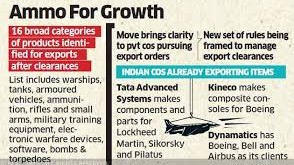Introduction:
Armored vehicles stand as the bulwark of military and security forces, playing a pivotal role in modern warfare scenarios. Armored vehicles play a crucial role in modern military and law enforcement operations, providing protection, mobility, and firepower.
In an era marked by geopolitical tensions, security concerns, and technological advancements, the global armored vehicle market is witnessing significant growth and transformation. This blog explores key trends, emerging technologies, and the future outlook of the global armored vehicle market.
Current Landscape:
Armored vehicles are used for transporting military personnel and cargo and operates in active combat. These include land combat and transportation vehicles used by military land forces for operations.
Armored vehicles encompass a range of platforms, including main battle tanks, infantry fighting vehicles, and personnel carriers, serving as the backbone of ground forces. Tanks are the most well known type of armored vehicle, and one of the most powerful. Most tanks have tracks, a powerful main cannon (or in some cases, multiple cannons) mounted on a rotating turret, armor to protect the crew and internal components from incoming fire and flying debris, and are designed to fulfill a multitude of tasks that very few other military units can complete.
Infantry Fighting Vehicles (IFVs) are vehicles designed to carry infantry into battle, protect them, and to provide general fire support. They tend to have characteristics similar to light tanks, but they tend to have large passenger compartments for transporting infantry. IFVs today can fulfill reconnaissance roles as well. Armored Personnel Carriers are designed to carry infantry cross-country or into battle, much like IFVs (Infantry Fighting Vehicles). APCs tend to share characteristics with IFVs and Light Tanks, but they sacrifice firepower for large passenger capacity and low cost.
Self-Propelled Guns are vehicles built to provide an artillery system with more mobility. SPGs are designed to deliver long range fire to distant targets and relocate quickly when needed.
Despite advancements in sensors and anti-tank technologies, armored fighting vehicles remain indispensable in land warfare. Nations worldwide recognize their strategic importance, leading to substantial investments in upgrading existing fleets. In particular, major initiatives are underway to enhance military capabilities, focusing on strengthening force protection and increasing operational versatility.
Global Interest and Impact:
The war in Ukraine has reignited global interest in military armored vehicles, prompting a reassessment of designs and tactical concepts.
The conflict between Russia and Ukraine in 2022 had a significant impact on the European defense sector. Several countries joined forces to support Ukraine, resulting in an increased demand for armored vehicles. The United States provided Ukraine with security assistance, including T-72B tanks, in collaboration with the Netherlands and the Czech Republic. This situation has led to a surge in armored vehicle usage across Europe, particularly among NATO countries
Questions about the efficacy of armored vehicles in the modern battlefield have surfaced, especially with the development of long-range anti-tank systems. Established manufacturers, such as Milrem Robotics and Leonardo, showcase the potential for collaborative efforts to create advanced robotic combat systems.
Challenges and Threats:
Next-generation armored vehicles face multifaceted threats, ranging from near-peer conflicts to insurgent warfare. The recent conflict in Ukraine has shed light on the limitations of these platforms, driving a surge in the development of active protection systems and manned-unmanned teaming.
The battlefield environment demands resilience against Rocket Propelled Grenades (RPGs), Anti-Tank Guided Missiles (ATGMs), and improvised explosive devices (IEDs). Rocket Propelled Grenades (RPGs) that are thrown from short distances. Anti-Tank Guided Missiles (ATGMs) that use infrared or radar guidance to attack the tops or engine compartments of vehicles. Mines or improvised explosive devices (IEDs) designed to attack the weaker bottoms of vehicle.
Advanced survivability systems, including active protection and modular armor, mitigate these threats, ensuring the safety of vehicle occupants.
This shift aims to leverage armed unmanned ground vehicles (UGVs) to outmaneuver adversaries and reinforce defenses.
Enhancing Combat Capabilities:
By adopting sophisticated armored vehicles, armed forces augment their combat capabilities, safeguarding troops against kinetic and ballistic threats such as small-arms fire, mine explosions, grenades, and IEDs. The focus on technology integration, including artificial intelligence, elevates the effectiveness of armored platforms in diverse missions.
Military organizations are also planning and implementing roadmaps that will lead to zero-emissions. The task is challenging, especially for frontline, combat vehicles where capabilities and logistics are key elements before adopting a new technology. The electrification of non-combat vehicles is only a step away. However, in the mid-run combat vehicles will rely on hybrid systems until battery capacity and energy generation in the battlefield issues are significantly addressed
Technological Enablers and Future Prospects:
Technological enablers such as the Internet of Military Things (IoMT), cloud computing, virtual reality, and artificial intelligence are revolutionizing the tactical use of armored vehicles. Manned-Unmanned Teaming scenarios, enabled by AI, introduce the concept of swarming in ground operations, minimizing risks to human troops. The ongoing transition towards zero-emission vehicles and the exploration of hybrid systems for combat vehicles signal a strategic shift.
Emerging Technologies:
- Electric Propulsion: The integration of electric propulsion systems in armored vehicles offers advantages such as reduced noise, improved fuel efficiency, and enhanced stealth capabilities. Electric-powered armored vehicles are gradually becoming a focus for military modernization programs.
- Unmanned Ground Vehicles (UGVs): The rise of unmanned technologies extends to armored vehicles, with UGVs taking on roles such as reconnaissance, surveillance, and logistics support. The development of autonomous armored platforms is reshaping traditional concepts of military operations.
- Advanced Survivability Systems: The incorporation of advanced survivability systems, including active protection systems (APS) and modular armor, enhances the resilience of armored vehicles against a variety of threats, including anti-tank missiles and improvised explosive devices (IEDs).
Global armored vehicle market
The global armored vehicle market has experienced notable expansion, driven by increased defense budgets, rising security concerns, and the need to modernize aging fleets. Countries worldwide are investing in advanced armored vehicles to enhance their military capabilities. Notably, regions such as North America, Europe, Asia-Pacific, and the Middle East are significant contributors to the market’s growth.
Market Projections and Growth Drivers:
The global armored vehicle market size was USD 24.92 Billion in 2022 and is expected to register a revenue CAGR of 5.2% during the forecast period. A comprehensive market research report highlights that the market is expected to register a revenue CAGR during the forecast period, driven by several key factors.
The global armored vehicle market is predicted to reach a staggering $33.9 billion by 2030, growing at a steady clip of 6.2% annually. This translates to more tanks, APCs, IFVs, and specialized armored vehicles rolling off production lines across the globe.
Factors such as the rising focus on soldier protection, increasing defense budgets, and the need for mine-resistant vehicles contribute to this growth.
Geopolitical Tensions: Increasing geopolitical tensions and conflicts worldwide have boosted the demand for armored vehicles for security and military operations.
Counterterrorism: The ongoing fight against terrorism has contributed to the rising demand for armored vehicles. Increasing communal riots and organized crimes in regions such as MEA and the Asia Pacific is another factor driving the growth of the market. The rising security challenges arising out of the increasing insurgent activities and crime rate is propelling the demand for civilian armored vehicles. In addition, armored vehicles are gaining popularity with number of public figures, and elite groups are adopting armored passenger vehicles for a greater sense of security. Leading automobile manufacturers are launching wide range of bulletproof vehicles to meet this rising demand for armored vehicles.
Global Investments: Commercial and technological advancements, coupled with increased investments in research and development activities, have transformed the defense vehicle industry.
Regional dynamics, with the Asia Pacific leading in market share, reflect the growing emphasis on military strength in countering terrorism.
Market Trends:
Technological Advancements: Recent upgrades and developments in military equipment, including technologies like reactive armor and advanced autoloaders, have significantly impacted the market.
- Demand for Active Protection Systems: Despite a trend toward mobility with lighter protection, investments in cost-effective and precise active protection systems for Main Battle Tanks (MBTs) continue to drive market growth.
- Technological Integration: Armored vehicles are evolving with advanced technologies such as artificial intelligence, autonomous capabilities, and digital communication systems. The integration of sensors, cameras, and data analytics enhances situational awareness and operational effectiveness.
- Versatility and Modularity: Modern armored vehicles are designed to be versatile and modular, allowing for easy customization based on mission requirements. This adaptability ensures that vehicles can perform various roles, from infantry transport to reconnaissance and combat support.
- Lighter and Agile Designs: The trend towards lighter and more agile armored vehicles is gaining traction. Manufacturers are exploring materials like composite armor to reduce weight while maintaining high levels of protection. This shift enhances mobility and operational flexibility.
Market Segmentation:
The global armored vehicles market is segmented based on application, drive type, vehicle type, and region. In terms of application, the market is categorized into defense and commercial. The drive type is bifurcated into wheel and track, while the vehicle type includes armored personnel carriers, infantry fighting vehicles, main battle tanks, tactical trucks, buses, limousines, sedans, and others. The market’s regional analysis spans North America, Europe, Asia-Pacific, and LAMEA.
Dominant Segment: The infantry fighting vehicle (IFV) segment is poised to dominate the market, emerging as one of the fastest-growing segments. Major countries, including the US (with a 6.2% growth rate), Australia (6.5%), Russia (3%), and India (8.8%), contribute significantly to this segment’s robust growth.
Adoption of Unmanned Combat Vehicles: The adoption of unmanned ground vehicles (UGVs) presents substantial potential, particularly in naval operations, supporting Marine combat and logistical operations both ashore and afloat. Countries are actively addressing technical challenges to develop and deploy unmanned armored vehicles. Singapore’s initiatives, such as the Diana project with the GINTIC Institute of Manufacturing Technology, focus on indigenous technologies for autonomous armored vehicles. The subsequent DSTA-led Project Ulysses involves a specifically modified Autonomous UGV (AUGV), an M-113 armored personnel carrier, equipped with features like a laser scanner, steering actuators, brakes, and other autonomous capabilities. The widespread adoption of unmanned armored vehicles is anticipated to offer remarkable growth opportunities for industry players.
Electric and Hybrid Vehicles in Military: The market anticipates significant growth in Electric Vehicles (EVs) and Hybrid Electric Vehicles (HEVs) within the military sector. The strategic move towards electrification of battlefield, combat, and army vehicles is driven by logistical advantages. Military vehicles, often traversing remote areas, face maintenance challenges with fossil fuel-powered vehicles, making electric vehicles more appealing. The need for large fuel convoys and increased susceptibility to attacks, especially aerial, necessitates a shift towards electric vehicles. In military maneuvers, the objective is to minimize the number of trucks carrying materials to the battlefield, making electric vehicles advantageous with lower maintenance overheads, simplified mechanics, and lower failure rates.
Major Players:
- United States: The undisputed leader, with industry giants like General Dynamics, BAE Systems, and Lockheed Martin dominating the market. Think Abrams tanks and Bradley Fighting Vehicles, some of the most potent armored beasts in the world.
- Europe: Germany, France, and the UK boast formidable players like Rheinmetall, Nexter, and BAE Systems, churning out innovative vehicles like the Leopard 3 battle tank and the Boxer Multirole Armored Vehicle.
- China: A rising star, rapidly developing its own advanced armored vehicles like the Type 99A2 main battle tank and the ZBL-09 infantry fighting vehicle.
Industry Landscape and Key Players:
Leading players in the armored vehicles market, including Oshkosh Corporation, General Dynamics Corporation, BAE Systems, and Rheinmetall AG, adopt strategies such as new product launches and contracts to sustain growth.
Prominent manufacturers include BAE Systems, General Dynamics Corporation, Rheinmetall AG, Oshkosh Corporation, and Lockheed Martin. These companies continually invest in research and development to stay at the forefront of technological advancements.
Noteworthy developments, such as the introduction of hybrid-electric Joint Light Tactical Vehicles and partnerships for Optionally Manned Fighting Vehicles, highlight the industry’s commitment to innovation.
Latest Industry Developments:
- In January 2022, Oshkosh Defense, LLC, a company specializing in military vehicles, mobility systems, and technology solutions, launched its groundbreaking hybrid-electric Joint Light Tactical Vehicle (JLTV), marking a significant stride in the integration of advanced propulsion technologies into military platforms.
- In November 2021, HENSOLDT, a prominent German multinational focusing on sensor technologies for defense and aerospace, announced a substantial upgrade to its Multifunctional Self-Protection System (MSFS). This sensor-based system is designed to counter evolving threats such as anti-tank guided missiles and laser-directed ammunition. MSFS 2.0 optimizes size, weight, and quantity of components, with a new laser rider enhancing directional resolution and threat detection capabilities. The increased computing power of the central unit contributes to the system’s effectiveness in identifying missile and projectile threats.
- January 2021 witnessed Elbit Systems Ltd., an international high-tech corporation specializing in defense applications, signing a tank and armored vehicle contract with the Asia Pacific government. The agreement involves the supply of the Sabrah light tank, based on the tracked ASCOD platform, and the Pandur II eight-wheel-drive vehicle. Elbit Systems will act as the prime contractor for this three-year initiative, contributing advanced armored solutions to enhance the region’s military capabilities.
- In February 2021, American Rheinmetall Vehicles, LLC, a subsidiary of Rheinmetall AG, joined forces with L3Harris Technologies, a prominent American technology and defense contractor. The partnership aimed to develop an Optionally Manned Fighting Vehicle (OMFV) for the U.S. Army, representing a transformative step in modernizing military fleets. This innovative vehicle replaces the Bradley Infantry Fighting Vehicle, offering enhanced armor protection while fulfilling critical scouting functions.
- Also in February 2021, Arquus, an automotive firm specializing in light and medium-sized wheeled armored vehicles, introduced the Scarabee. This lightweight and rugged vehicle are designed for spotting, locking onto, acquiring, and engaging targets, showcasing advancements in tactical vehicle capabilities.
- In April 2021, INKAS Armored Vehicle Manufacturing, a Canadian firm specializing in security and development of armored vehicles, announced a significant procurement of vehicles for the U.S. government. With an expanded capacity and expertise, INKAS provides high-quality armored vehicles and fleets available through the United States General Services Administration’s (GSA) Advantage program, contributing to the security infrastructure.
- On 09 February 2023, The U.S. Army Contracting Command Detroit Arsenal granted a contract to AM General, a leading global provider of military mobility solutions, for 5 years, with an optional extension of another 5 years. This contract encompasses the production of an estimated 20,000 Joint Light Tactical Vehicles (JLTV) in addition to around 10,000 trailers. AM General is strongly positioned to advance the next generation of JLTVs to align with the demands of missions across the entire spectrum of military operations.
- On 10 January 2023, Iveco Defense Vehicles (IDV) secured a contract to supply the Italian Navy with a total of 36 Amphibious Armored Vehicles (VBA) designed for personnel transport. The agreement was formalized between IDV and the Directorate of Land Armaments, an entity within the Italian Ministry of Defense. This contract is a component of the Ministry’s ongoing initiative to modernize and expand the vehicle fleet, increasing national defense capabilities.
Future Outlook: The global armored vehicle market is poised for further growth, driven by ongoing military modernization programs and the incorporation of cutting-edge technologies. As geopolitical tensions persist and new threats emerge, nations will continue to prioritize the enhancement of their armored capabilities. Additionally, the market is likely to witness increased collaboration between traditional defense contractors and technology companies, fostering innovation and the development of next-generation armored solutions.
Conclusion:
The global armored vehicle market is in a dynamic phase, with technological advancements and evolving security challenges shaping its trajectory. As nations strive to maintain a robust defense posture, the demand for modern, versatile, and technologically advanced armored vehicles is expected to remain strong.
As the global armored vehicle market undergoes unprecedented advancements, the synergy of technology, strategic partnerships, and evolving battlefield requirements shapes the future of military ground operations. The industry’s resilience in addressing challenges and embracing innovations underscores its critical role in ensuring the safety and effectiveness of armed forces worldwide.
References and Resources also include:
https://www.grandviewresearch.com/industry-analysis/armored-vehicle-market
https://www.army-technology.com/buyers-guide/armoured-military-vehicles/
https://www.asdnews.com/news/defense/2022/06/27/new-momentum-military-armoured-vehicles-market
 International Defense Security & Technology Your trusted Source for News, Research and Analysis
International Defense Security & Technology Your trusted Source for News, Research and Analysis


